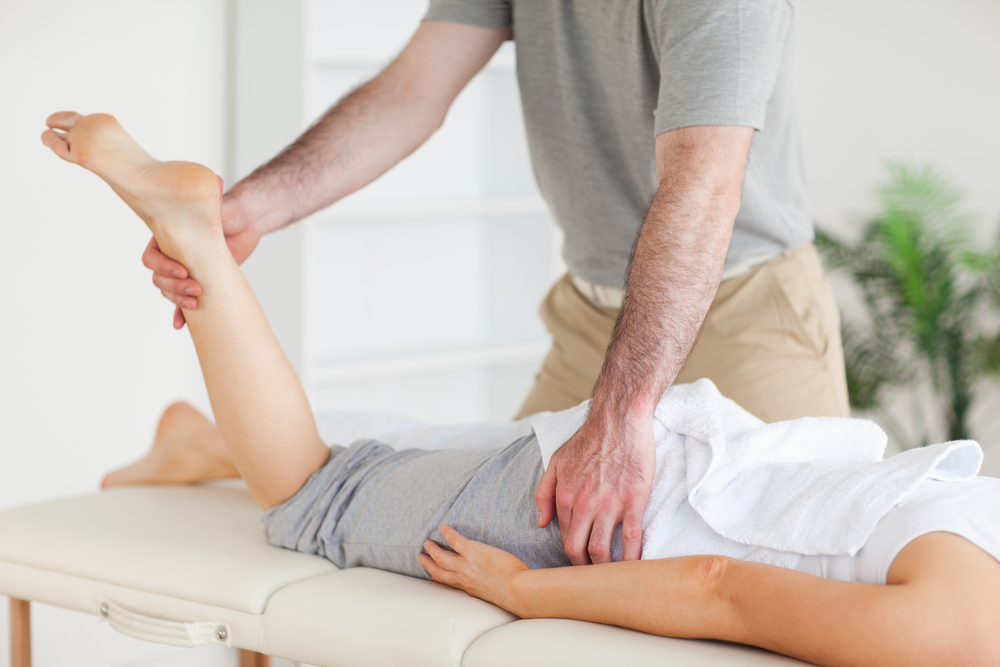How Does Arthritis Affect Your Hips?
5 min read

Many people experience hip pain as they get older. It gets harder to start moving when your hips are stiff. One common cause of this is arthritis. Just like other joints in the body, the cushioning in the hip joint can wear away causing pain.
Let’s take a look at hip joint arthritis and what you can do to relieve pain, or avoid it from starting.
How Do the Hip Joints Change as We Age?
The hip joint is one of two joints in the body that are “ball and socket”. This makes it possible for your leg to move in all directions, just like your shoulder joint allows your arm to move in circles as well as up and down. Because you use your hips for so many things, it’s common for them to start to deteriorate as you get older. Specifically, the cartilage in the socket that holds the top of the thigh bone (femoral head) in place, starts to break down. Cartilage is the “cushion” in your joints that allows them to move smoothly and without pain. Without it, you start to feel “bone on bone” pain when walking, standing, sitting, climbing stairs, etc.
Types of Arthritis
Although there are more than 100 different types of arthritis, the most common types of hip arthritis are osteoarthritis and rheumatoid arthritis (RA).
While both cause hip pain, the main difference between osteoarthritis and rheumatoid arthritis is their causes.
Osteoarthritis of the Hip
Osteoarthritis is also sometimes referred to as degenerative arthritis. This is the most common type of arthritis, which occurs over time as your hip joint gradually wears down. Because this causes the bones to rub against each other, osteoarthritis can cause a lot of pain that worsens over time.
Because it is a progressive disease, osteoarthritis is more commonly seen in people over the age of 50. Other risk factors that make you more likely to develop osteoarthritis include obesity, previous hip injury, family history of arthritis, and hip dysplasia that is present at birth.
There are a few stages of hip arthritis ranging from mild to severe:
- Stage 1: Wear and tear on the hips is minor and doesn’t cause much pain, if any. Bone spurs could begin to develop at this stage.
- Stage 2: The cartilage in the hip joint begins to break down causing some pain and stiffness. This stage is also referred to as mild hip osteoarthritis. Bone spurs may be visible on an X-ray.
- Stage 3: Referred to as moderate hip osteoarthritis, more of the cartilage has worn away bringing the bones closer together. This means when walking, kneeling, or squatting you’ll experience some hip pain and possibly swelling. Larger bone spurs may develop.
- Stage 4: At the highest stage pain and discomfort are pretty much constant because the cartilage is almost gone. When this happens the area becomes inflamed all the time which is the source of the pain.
Rheumatoid arthritis (RA)
Rheumatoid arthritis (RA) differs from osteoarthritis since it is an autoimmune condition. RA occurs when the immune system mistakenly attacks itself, targeting the joints. RA can affect other areas of the body and the lining of the joints. The effects of RA cause painful swelling, which can lead to bone erosion and joint deformity.
Symptoms of hip arthritis
The most common symptom of arthritis in the hips is pain that progressively worsens. Depending on the type of arthritis, the symptoms will vary a bit.
Common symptoms of osteoarthritis in the hips include:
- Groin and thigh pain that radiates to the buttocks or knee.
- Sudden moments of pain with certain activities.
- Feelings of stiffness in the hip joint.
- Clicking, snapping, or grinding sounds with certain movements.
Common symptoms of rheumatoid arthritis in the hips include:
- Heat or warmth in the hip, buttocks, thigh, and groin area.
- Pain or stiffness upon waking that gets better with movement.
- Limping (this typically occurs after RA has progressed and caused more severe joint damage).
- Difficulty standing due to joint pain.
How to Reduce Hip Pain Caused by Arthritis
Although there is no cure for arthritis, there are some ways to help alleviate the pain especially before it becomes too severe. For higher stages of hip osteoarthritis, surgery may be needed to “clean” the hip joint or even possibly replace it. But oftentimes you can avoid getting to this point by taking some precautions and using chiropractic treatment at earlier stages.
Chiropractic Care for Hip Pain
Many people don’t realize that chiropractors can help treat hip pain holistically. In fact, many individuals find that chiropractic pain is enough to help with their pain and avoid surgeries. Below are some chiropractic treatments that can help with joint pain from arthritis.
- Cold laser therapy. This treatment uses a low-intensity laser to promote blood flow to the area where you’re experiencing pain. While the cartilage won’t be able to rebuild, the blood flow to the area can help reduce joint pain. Learn more about how cold laser therapy can help knee pain.
- Spinal manipulation. Receiving an adjustment isn’t just for your back. If your hips are out of alignment, you’re going to have more pain than you should. That’s because the bones are not aligned correctly which causes them to rub together.
- Myofascial Acoustic Compression Therapy. Is a non-surgical treatment that promotes the healing of chronic or acute pain in muscles, joints, and tendons
- Massage therapy. Relaxing the muscles around your hips can help reduce the amount of pain you’re experiencing. It’s probably best to have a regular massage (at least once a week) planned to see the pain-relieving results of this approach.
Related Blog: How Chiropractic Care Helps Treat Knee Pain from Arthritis
Other Ways to Help Relieve Hip Pain
- Switch to a low impact exercise plan. You need to keep moving, but you don’t want to cause more damage to your hip joints. Talk to the chiropractor or your doctor about what’s good for you. Some examples include swimming or other low impact activities.
- Watch what you eat so that you stay at a healthy weight. Your joints really aren’t built to handle additional weight without causing damage and pain.
- Use a heating pad. This can help soothe the hip inflammation if you’re having pain.
Let Village Chiropractic Help You Manage Your Hip Pain.
At Village Chiropractic, we are happy to offer several different chiropractic treatments to help patients who struggle with painful conditions like arthritis in the hips. Remember, it’s better to start treatments sooner rather than later when it will take more to get the relief you’re looking for.
Request an appointment today at our office in The Woodlands for an assessment of what we can do to help you relieve your hip pain.
More from Our Blog on This Topic
6 min read
5 min read



